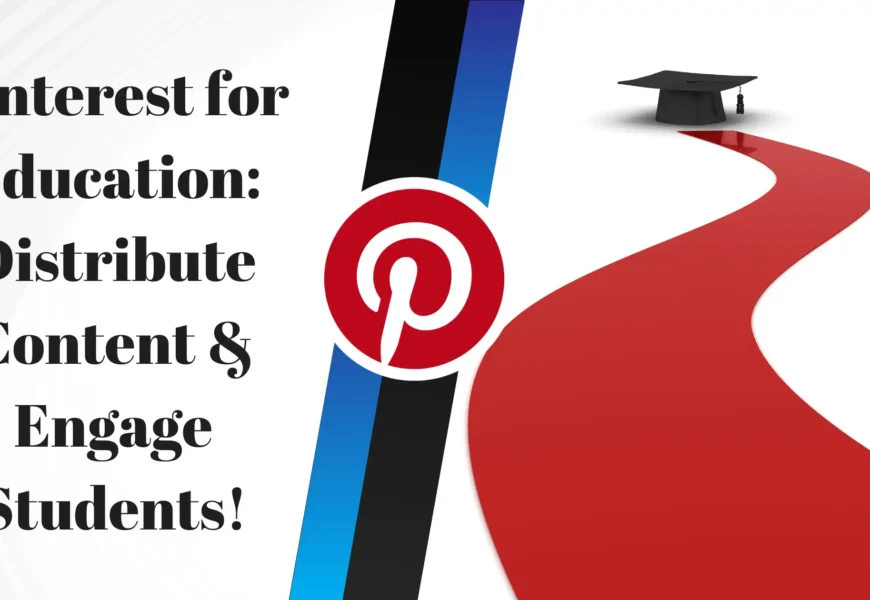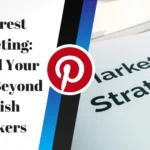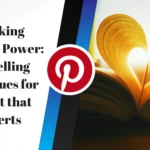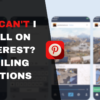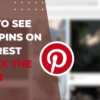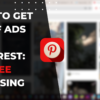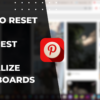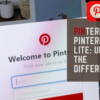Pinterest for Education: Distribute Content & Engage Students!
Are you an educator looking for fresh ways to share your awesome content and connect with students? You’ve probably heard of Pinterest, the place where people go for inspiration, recipes, and DIY projects. But did you know it’s also a fantastic tool for education?
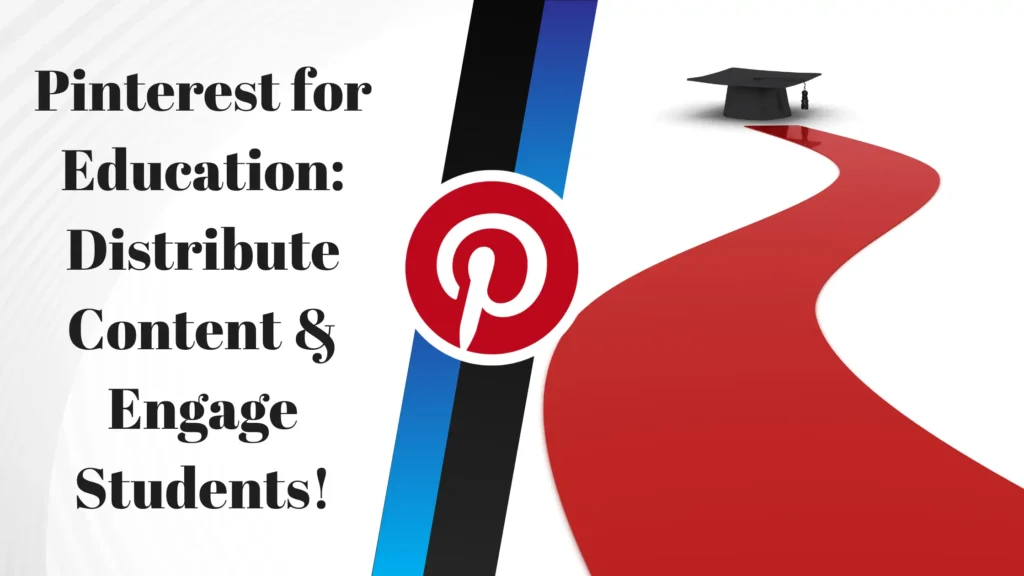
Why Pinterest is a Game-Changer for Educators
Forget stuffy textbooks and boring lectures! Pinterest offers a visual and engaging platform that can breathe new life into your teaching. Think of it as a giant online bulletin board, where you can pin (save) images, videos, and links to resources that are relevant to your subject.
Why is this so great? Well, visuals are incredibly powerful learning tools. They can help students grasp complex concepts more easily and remember information for longer. Plus, Pinterest is incredibly user-friendly, making it a breeze for both teachers and students to navigate.
Think of Pinterest as your digital filing cabinet, but way more fun and interactive. You can organize your resources by topic, grade level, or any other category that makes sense for your classroom. And the best part? You can share your boards with your students, giving them access to a wealth of educational materials at their fingertips.
Reaching Students Where They Are
Let’s face it, most students spend a significant amount of time online. Why not meet them where they are? Pinterest allows you to connect with students in a space they already enjoy, making learning feel less like a chore and more like an exploration. Share your educational content strategically.
Ever wondered how to capture a student’s attention? Imagine creating a Pinterest board filled with stunning images of historical artifacts, engaging videos explaining scientific principles, or interactive quizzes that test their knowledge. Suddenly, learning becomes an adventure, not a task.
Consider this, when you tap into the visual nature of the platform, you’re engaging a different part of their brain, making learning more memorable and impactful. Plus, you’re exposing them to a world of ideas and resources they might not otherwise encounter. It’s like opening a window to a universe of knowledge!
Getting Started with Pinterest for Education
Okay, so you’re intrigued. Great! Getting started with Pinterest is easier than you think. Here’s a step-by-step guide to help you create your own educational empire on Pinterest:
- Create a Pinterest Account: If you don’t already have one, sign up for a free account. You can use your email address or connect with your Google account.
- Create Boards: Think of boards as folders for your pins. Create boards for different subjects, grade levels, or topics. For example, you might have boards for “Algebra 1,” “Ancient Civilizations,” or “Science Experiments.”
- Start Pinning: Search for relevant content on Pinterest or pin directly from websites you find useful. Be sure to include clear and descriptive descriptions for each pin, so students know what they’re looking at.
- Follow Other Educators: Connect with other teachers on Pinterest to discover new resources and ideas. You can also follow relevant organizations and educational websites.
- Share Your Boards with Students: Once you’ve created some boards, share the links with your students. You can post them on your class website, email them to your students, or even print them out.
Tips for Creating Engaging Pinterest Boards
Creating a Pinterest board is one thing, but creating an *engaging* Pinterest board is another. Here are a few tips to help you create boards that will capture your students’ attention:
- Use High-Quality Visuals: Pinterest is a visual platform, so make sure your pins are visually appealing. Use high-resolution images and videos that are clear and easy to understand.
- Write Compelling Descriptions: Don’t just copy and paste descriptions from the original source. Write your own descriptions that are engaging and informative. Explain why the resource is valuable and how students can use it.
- Organize Your Boards Logically: Make it easy for students to find what they’re looking for by organizing your boards logically. Use clear and concise titles and descriptions.
- Mix It Up: Don’t just pin articles and websites. Include a variety of content, such as videos, infographics, quizzes, and interactive activities.
- Be Consistent: Regularly update your boards with new content to keep students engaged.
Ideas for Using Pinterest in the Classroom
Now that you know how to create and manage Pinterest boards, let’s talk about some specific ways you can use them in the classroom. The possibilities are endless, but here are a few ideas to get you started:
- Create a Resource Library: Use Pinterest to create a digital library of resources for your students. You can include articles, videos, websites, and other materials that support your curriculum.
- Assign Research Projects: Have students use Pinterest to research a topic and create their own boards. This can be a great way to encourage them to explore different perspectives and synthesize information.
- Curate Visual Learning Aids: Build boards showcasing historical images, scientific diagrams, or literary maps to help students visualize and understand complex subjects.
- Develop Vocabulary Builders: Use visuals to explain new words and concepts, creating engaging vocabulary lists that are fun to browse.
- Create a Collaborative Board: Invite students to contribute to a collaborative board where they can share their own ideas and resources.
Engaging Examples in Action
Here’s an example. A history teacher can create a board dedicated to World War II, pinning images of key figures, maps of battlefields, and links to primary source documents. Students can then use this board to research specific events, create timelines, or even debate different perspectives on the war.
Another instance would be a science teacher using Pinterest to create a board showcasing different types of ecosystems. They could include videos explaining the food chain, images of various plants and animals, and links to interactive simulations. This board could then be used as a visual aid during lectures or as a resource for students working on independent projects.
Addressing Potential Challenges
While Pinterest offers many benefits for educators, it’s important to be aware of potential challenges and how to address them:
- Copyright Issues: Always be mindful of copyright laws when pinning content. Give credit to the original source and avoid pinning copyrighted material without permission.
- Inaccurate Information: Not everything you find on Pinterest is accurate. Encourage students to critically evaluate the information they find and to cross-reference it with other sources.
- Distractions: Pinterest can be a distracting platform, especially for younger students. Set clear expectations for how students should use Pinterest and monitor their activity.
- Accessibility: Ensure that your Pinterest boards are accessible to all students, including those with disabilities. Use alt text for images and provide captions for videos.
Staying Safe and Ethical on Pinterest
Think of Pinterest as a public space. Just like in the real world, it’s important to be respectful and responsible. Teach students about digital citizenship and online safety. Emphasize the importance of citing sources, avoiding plagiarism, and being respectful of others’ opinions.
Also, it is important to establish clear guidelines for what is and isn’t acceptable to pin. Remind students that anything they post online can be seen by others, and that they should always think before they pin. By fostering a culture of responsible online behavior, you can help your students use Pinterest safely and ethically.
Pinterest: Your Educational Content Hub
Pinterest is more than just a place to find recipes and fashion inspiration. It’s a powerful tool that can transform the way you teach and connect with your students. By using Pinterest strategically, you can create engaging learning experiences that will inspire your students and help them succeed.
So, what are you waiting for? Get started today and discover the endless possibilities of Pinterest for education! Experiment and create boards and you may see results you never saw before. Educational content can be fun.
Think of Pinterest as your secret weapon in the fight against boredom and disengagement. With a little creativity and effort, you can turn it into a vibrant hub of learning that will benefit both you and your students. Good luck, and happy pinning!

